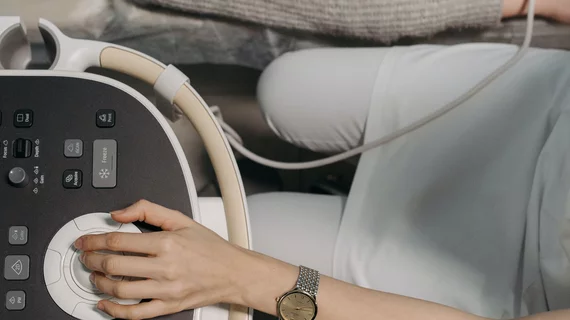Radiology subspecialists see ultrasound as a valuable resource for enhancing radiomics
New research shows that it is possible to extract radiomic imaging features from ultrasound scans, but providers must pay attention to certain factors that impact the process.
That’s what a team of French radiologists discovered after mining quantitative features from more than 80 patient scans. It’s one of the few studies to apply radiomics to ultrasound and the first to assess the repeatability of doing so, experts said Friday in Diagnostic and Interventional Imaging.
The group found that slice variability and preprocessing both impact radiomic feature extraction, suggesting preprocessing steps should be clearly outlined in order to gain useful insights from US scans.
“Our results suggest image intensity standardization with outliers removal applied to regions of interest delineated on the lesion and a fixed bin size grey-level discretization method could increase the number of repeatable features and therefore potential imaging biomarker candidates,” Loïc Duron, with the Department of Neuroradiology at Alphonse de Rothschild Foundation Hospital in Paris, and co-authors wrote.
For their single-center study, Duron et al. enrolled 88 patients with orbital lesions to receive US exams between December 2015 and July 2019.
The interclass correlation coefficient was used to assess the interslice repeatability of radiomic features. At the same time, the team examined the effect of preprocessing on repeatability by using a few techniques, including image intensity standardization with or without outliers removal on whole images, bounding boxes or regions of interest (ROI), and fixed bin size or fixed bin number grey-level discretization.
Without preprocessing images, 28.7% (29/101) of features were repeatable between slices. Duron et al. obtained the greatest number of repeatable features (41/101) by using the fixed bin size discretization preprocessing technique along with image intensity standardization.
The group noted future efforts should focus on whether biomarker features can accurately predict patient outcomes, which is the goal of radiomics but wasn’t assessed in their study.
Given ultrasound is one of the most widely utilized imaging techniques around the world, the group sees such scans as a valuable resource for enhancing radiomic processes.
Read the full study here.

